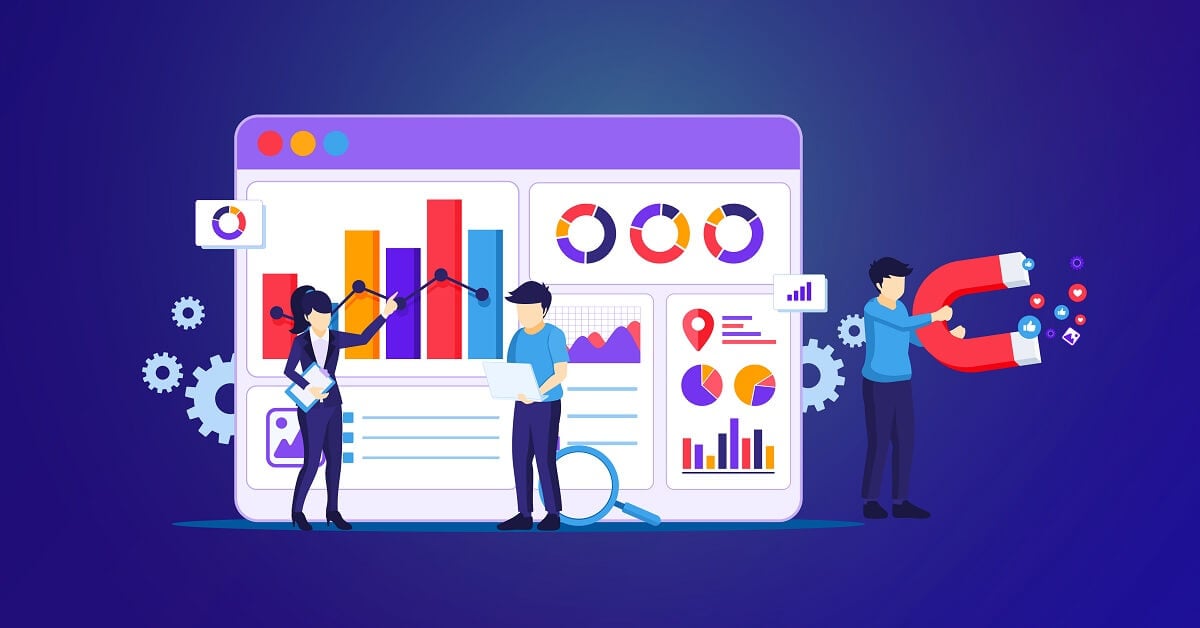Many marketers are frustrated with the lack of quality customer data available for e-commerce – but it doesn’t have to be this way. There are many strategies you can employ to help collect better data and empower your marketing campaigns.
In this blog post, we will explore 3 ways to increase the accuracy of your customer records and improve campaign performance!
Let’s get started!
Strategy 1: Collect The Right Data
Are you collecting the right kind of customer data?
The first step in building a database is to identify what type of data you are collecting. This needs to include four different types of collected data: identity, quantitative, descriptive, and qualitative.
Below you’ll find a description of each with examples, along with ideas on how to collect them.
Identity Data
Once you have the customer’s contact information, you can build a profile of them. The profile is made up of essential information and their contact details. Once this is done, the communication can be customized for their niche in the customer journey.
This includes;
- Name: Title, First Name, Last Name, etc.
- Personal: Date of Birth, Region, Gender, etc.
- Address: Shipping Address, Billable Address, etc.
- Telephone: Home No., Work No., Cell Phone No.
- Social Network: Facebook, LinkedIn, Twitter Address, etc.
- Account: User IDs, Payment Preferences, etc.
Collecting Identity Data from E-commerce Customers
Based on your e-commerce model, you can build a first-party customer database using the following data capture sources;
- Tailored sign-up forms
- Discount vouchers for first purchases
- Providing pre-order opportunities
- Tailored e-commerce checkout process
- Warranty cards
- Loyalty/rewards programs
Quantitative/Purchase Data
Use a deep understanding of customer data – both quantitative and qualitative – to inform decisions about your e-commerce campaign.
To delve deeper into your customer’s experience with you, it’s crucial to understand how they use your products and interact with them.
The data collected is also quantitative because it can be measured objectively or numerically. You should collect this information if you plan to run an e-commerce campaign targeting a particular demographic segment.
Quantitative data includes;
- Inbound/Outbound Communication: Date, Time, Channel, Opens, Click Through Rates, etc.
- Online Activity: Website Visits, Product Views, Online Registration, etc.
- Online/Offline Transactions: Product Purchased, Amount of Purchases, Time of Purchase, Order/Subscription Value, Order/Renewal Dates, Cart Abandonment, Product Returns, etc.
- Social Network: Social Handles, Groups, Interactions, Interests, etc.
- Customer Service: Complaint Details, Customer Query Details, Call Center Communication, etc.
Collecting Quantitative Data from E-Commerce Customers
You can tap into the following resources to gather reliable quantitative data from your target audience;
- Web Analytics Tools such as Google Analytics
- Website cookies/mouse-tracking heatmaps on landing pages.
- Tracking pixels in emails/newsletters
- Recording historical purchase transactions
- Recording historical customer support communication
- Social media activities
Qualitative/Descriptive Data
Qualitative or Descriptive data explains the reasoning behind people’s choices. It usually answers the questions that start with how, why, and how. This data also tells you about the general opinions and attitudes of your target audience.
Examples of qualitative data are “How do these things get formed?” or “Why do people behave in a certain way?”
- Family: Marital Status, Relationships, Number of Children, etc.
- Lifestyle: Property Type, Car, Pet Ownership, Hobbies, Collections, Interests, etc.
- Education: High School, College, Advance Education, etc.
- Career: Job Title, Job Description, Income, Professional Background, etc.
- Attitudinal: Perceived Value, Rating, Feedback, Repurchase Likelihood, etc.
- Motivational: Reason for Purchase, Customer Needs, etc.
- Opinion: Likes/Dislikes, Preferences, etc.
Strategy 2: Leverage a Customer Data Platform
For E-commerce businesses, a full-fledged customer data platform like Wigzo is a big boon. Its capabilities are indomitable, augmented by its marketing automation capabilities!
An e-commerce customer data platform helps brands build a targeted first-party database from scratch and analyzes it to reveal deep insights and refine it over time for growth.
Marketers can leverage this information and marketing automation tools to develop personalized campaigns that target specific audiences leveraging their purchase histories or peer groups.
For example, Wigzo has algorithms that help marketers analyze customers who have demonstrated strong product preferences such as making repeat purchases, returning items promptly for refunds if unsatisfied, responding positively to promotions via social media channels, etc. Most importantly, those who demonstrate an appreciation of what differentiates your business from competitors like Amazon.
With a Customer Data Platform like Wigzo, you can collect;
- Behavioral Data
- Demographic data
- Transactional Data
- RFM Data (Recency, Frequency, and Monetary)
Within the same dashboard, you can crunch these numbers to create smart customer segments, which can then be targeted with personalized campaigns for a superior ROI – and a customer experience adds to your retention rate with time.
Strategy 3: Create Transparent Customer Feedback Campaigns
Like Zappos, some companies choose to enact a customer feedback campaign that is transparent.
Customers receive an email notification when leaving their order on the site – reminding them they have 60 days to return it and providing links in case of any questions or concerns. The next day customers will receive an automatic survey via email asking about three aspects: how satisfied were they with their purchase? Did anything go wrong during delivery? What was your biggest concern before ordering?
This is just one example of creating a transparent feedback campaign/process to discover your customers’ honest reviews, attitudes, and perceptions of your brand and products.
Customer feedback campaigns can help you win more customers, even discover new avenues for marketing expansion for supercharged growth. So, do include these in your hunt for quality customer data.
Closing Note
Data is the new oil, and e-commerce brands guzzle it like anything. If you wish to master the game on online growth, you need to invest in a reliable customer data platform and fire up a combo of the above strategies to succeed.
Are you ready?
Then try Wigzo FREE and see how it can power up your e-commerce numbers.













